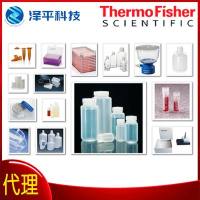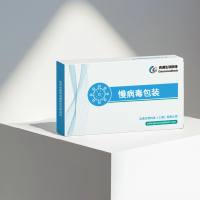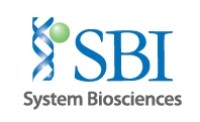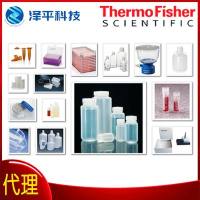TAIL PCR Protocol--Tail-PCR详细实验方法
互联网
1. Dilute the DNA sample 1:5 (Dilute more or less depending on DNA concentration.)
2. Add 5µL DNA, and 5µL AD primers to PCR plate according to the diagram below (each AD primer has a specific concentration, see Additional Information at the end of the protocol):
NOTE: Keep plate on ice throughout the procedure.
|
DNA1 AD1 |
DNA1 AD2 |
DNA1 AD3 |
DNA1 AD4 |
DNA 1 AD5 |
DNA1 AD6 |
DNA1 AD1 |
DNA1 AD2 |
DNA1 AD3 |
DNA1 AD4 |
DNA1 AD5 |
DNA1 AD6 |
|
DNA2 AD1 |
DNA2 AD2 |
DNA2 AD3 |
DNA2 AD4 |
DNA 2 AD5 |
DNA2 AD6 |
DNA2 AD1 |
DNA2 AD2 |
DNA2 AD3 |
DNA2 AD4 |
DNA2 AD5 |
DNA2 AD6 |
|
DNA3 AD1 |
DNA3 AD2 |
DNA3 AD3 |
DNA3 AD4 |
DNA 3 AD5 |
DNA3 AD6 |
DNA3 AD1 |
DNA3 AD2 |
DNA3 AD3 |
DNA3 AD4 |
DNA3 AD5 |
DNA3 AD6 |
|
DNA4 AD1 |
DNA4 AD2 |
DNA4 AD3 |
DNA4 AD4 |
DNA 4 AD5 |
DNA4 AD6 |
DNA4 AD1 |
DNA4 AD2 |
DNA4 AD3 |
DNA4 AD4 |
DNA4 AD5 |
DNA4 AD6 |
|
DNA5 AD1 |
DNA5 AD2 |
DNA5 AD3 |
DNA5 AD4 |
DNA 5 AD5 |
DNA5 AD6 |
DNA5 AD1 |
DNA5 AD2 |
DNA5 AD3 |
DNA5 AD4 |
DNA5 AD5 |
DNA5 AD6 |
|
DNA6 AD1 |
DNA6 AD2 |
DNA6 AD3 |
DNA6 AD4 |
DNA 6 AD5 |
DNA6 AD6 |
DNA6 AD1 |
DNA6 AD2 |
DNA6 AD3 |
DNA6 AD4 |
DNA6 AD5 |
DNA6 AD6 |
|
DNA7 AD1 |
DNA7 AD2 |
DNA7 AD3 |
DNA7 AD4 |
DNA 7 AD5 |
DNA7 AD6 |
DNA7 AD1 |
DNA7 AD2 |
DNA7 AD3 |
DNA7 AD4 |
DNA7 AD5 |
DNA7 AD6 |
|
DNA8 AD1 |
DNA8 AD2 |
DNA8 AD3 |
DNA8 AD4 |
DNA 8 AD5 |
DNA8 AD6 |
DNA8 AD1 |
DNA8 AD2 |
DNA8 AD3 |
DNA8 AD4 |
DNA8 AD5 |
DNA8 AD6 |
Key:
DNA1, DNA2, DNA3, ... = Individual DNA samples for T-DNA mapping. Add 5µL DNA (1° reaction) in an entire horizontal row (e.g. A) for each individual.
AD1, AD2, AD3, ... = Arbitrary Degenerate primers. Add 5µ of the 4X AD primer (1° reaction) to each vertical column as diagram indicates.
lightyellow= Left half of plate-Add LB1 primer cocktail.
grey=Right half of plates-Add RB1 primer cocktail.
3. Start the 1° Reaction (detailed in Additional Information ) program on thermal cycler and press PAUSE, letting the block cool to 4°C.
4. Mix the LB1 and RB1 cocktails according to TAIL Recipe spreadsheet included.
NOTE: Add Taq polymerase last .
5. Add 10µL of each cocktail (LB1 and RB1) to appropriate wells according to previous diagram.
6. Place plate in thermal cycler and press PAUSE, again to allow the reaction to proceed.
7. To prepare the 2° reaction, dilute 1° TAIL reaction 200-fold by transferring 1µL PCR products to 199µL ddH2O. (This is most easily achieved through the use of a multi-channel pipette.)
8. Set up 2° reaction plate according to same diagram, except use 4µL diluted DNA. NOTE: As before, keep plate on ice throughout preparation.
9. Add 5µL of the AD primers to the appropriate wells.
10. Start 2°ree; reaction program on thermal cycler and press PAUSE.
11. Add 11µL of border (LB2 or RB2) cocktail to appropriate wells and place plate in thermal cycler. Press PAUSE to allow reaction to proceed.
12. Once the 2° reaction has completed, the products can either be sequenced or a 3° reaction can be run to further purify the PCR products if there are many nonspecific products. CONTINUE if a 3° reaction is needed. To prepare samples for sequencing, SKIP to step 25.
13. The 3° reaction is prepared like the 2° needs to be diluted 100-fold and the overall reaction volume is 50µL. Add the diluted products from the 2° reaction to a new PCR plate. Again, keep reaction on ice and use a multi-channel pipette for diluting.
14. Add 12.5µL of the AD primers to the appropriate wells.
15. Start the 3° reaction program on the thermal cycler and press PAUSE.
16. Mix the LB3 and RB3 cocktail (adding the Taq last ) and add 32.5µL to appropriate half of plate.
17. Flash spin in a table top centrifuge to assure all reaction contents are at the bottom of the wells.
18. Place plate in thermal cycler and press PAUSE again to allow reaction to proceed.
19. To sequence entire contents of plate, SKIP to step 25. To run a gel and visualize the 3°ree; reactions, gollow these steps: Prepare a large 1% agarose gel with 4 rows of 50 wells (200 total wells).
20. Add the appropriate ladder (100bp or 1kb) to the first and last well in each row.
21. Using a multi-channel pipette, draw 7µL from row A or the 2° reaction. Expel this amount on a piece of parafilm. Using the same pipette tips, draw 3µL of loading dye and add it to the droplets on the parafilm. Mix the dye and reaction contents by pipetting up and down.
22. Without changing tips, draw all 10µL of the samples and add them to the gel starting next to the ladder in the top, left portion of the gel. NOTE: Using the multi-channel pipette will leave a space between the samples, this is desired.
23. Discard the pipette tips and repeat previous step until entire 2° reaction contents are loaded into the gel. Assure a space is left between all 2° reactions added to gel.
24. Now, do the same with the 3° reactions, add the 10µL of the 3° reactions directly next to the 2° reactions. If loaded properly, all lanes will be filled without spaces. This will make the gel easier to analyze. There should be a visible shift in product length from the 2° to the 3° raction. If there are multiple bands visible in one lane, purify individual bands for sequencing via the Topo Cloning Procedure. If single bands exist in the 3° reaction, continue to step 25 for product purification.
25. The PCR products must be purified before they can be squenced. This can be done individually via the Qiagen PCR purification protocol or enzyme purified as explained in this protocol. Transfer 5µ: of 2° reaction PCR products to a new plate. (Again, this is very easy with a multi-channel pipette).
26. Mix the Enzyme (Exol/SAP) Purification cocktail as follows:
|
ddH2O
ExoI SAP (PCR Products) TOTAL |
1.4µL 0.2µL 0.4µL ---(5.0µL) 2.0µL (7.0µL) |
27. Add 2.0µL enzyme purification cocktail to DNA samples (on ice ). Flash spin plate in a tabletop centrifuge.
28. Run reaction in thermal cycler. Use following program:
Step 1= 37°C for 20 min.
Step 2= 80°C for 15 min.
Step 3= 4°C forever
Step 4= END
~undefinedThe_reactions_are_now_ready_to_be_sequenced_with_the_corresponding_border_primers.~Kbr_~H~M~2~1~Kbr_~H~M~2~1ADDITIONAL_INFORMATION~Kbr_~H~M~2~1~Kbr_~H~M~2~1~Ku~MTAIL_1° REACTION PROGRAM:
Control Method: CALCULATED
1=4° for 2 min.
2=93° for 1 min.
3=95° for 1 min.
4=94° for 30 sec.
5=62° for 1 min.
6=72° for 2 min. 30 sec.
7=Go to step 4 for 4 more cycles
8=94° for 30 sec.
9=25° for 3 min.
10=Ramp for 72° at 0.2°/sec, 72° for 2 min. 30 sec.
11=94° for 10 sec.
12=68° for 1 min.
13=72° for 2 min. 30 sec.
14=94° for 10 sec.
15=68° for 1 min.
16=72° for 2 min. 30 sec.
17=94° for 10 sec.
18=44° for 1 min.
19=72° for 2 min. 30 sec.
20=Go to step 12, for 14 more cycles
21=72° for 5 min.
22=4° forever
23=END
TAIL 2° REACTION PROGRAM:
Control Method: CALCULATED
1=4° for 2 min.
2=94° for 10 sec.
3=64° for 1 min.
4=72° for 2 min. 30 sec.
5=94° for 10 sec.
6=64° for 1 min.
7=72° for 2 min. 30 sec.
8=94° for 10 sec.
9=44° for 1 min.
10=72° for 2 min. 30 sec.
11=Go to step 2, for 11 more cycles
12=72° for 5 min.
13=4° forever
14=END
TAIL 3° REACTION PROGRAM:
Control Method: CALCULATED
1=4° for 2 min.
2=94° for 10 sec.
3=44° for 1 min.
4=72° for 2 min. 30 sec.
5=Go to step 2, for 19 more cycles
6=72° for 5 min.
7=4° forever
8=END
AD (Arbitrary Degenerate) Primer Sequences and Concentrations:
|
AD1: NGTCGASWGANAWGAA
AD2: TGWGNAGSANCASAGA AD3: AGWGNAGWANCAWAGG AD4: STTGNTASTNCTNTGC AD5: NTCGASTWTSGWGTT AD6: WGTGNAGWANCANAGA |
128-fold degenerate 12µM
128-fold degenerate 12µM 128-fold degenerate 12µM 256-fold degenerate 16µM 64-fold degenerate 8µM 256-fold degenerate 16µM |
Stock concentrations of AD primers should be 20µM. To achieve the concentrations required for TAIL reactions, dilute in a seperate tube. The final amount of 400µL is sufficient for all 3 TAIL reactions.
64-fold degenerate Add 160µL primer and 240µL ddH2O
128-fold degenerate Add 240µL primer and 160µL ddH2O
256-fold degenerate Add 320µL primer and 180µL ddH2O
Alternate Plate Setups for TAIL If certain AD primers and/or border primers are found to produce more reliable products there is no need to use the other primers. As an example, I found the LB primer to work more often than the RB primer. Similarly, I found the AD1 and AD4 primers to generate nonspecific (vector) products at a high rate. Therefore, I designed a plate using ONLY the LB primer and AD2, AD3, AD5, and AD6 primers. This increased the maximum amount of DNA samples that I could run on one plate from 8 to 24. Obviously this can save a lot of time and materials. Here is an example of the modified plate setup.
|
DNA1 AD2 |
DNA1 AD3 |
DNA1 AD5 |
DNA1 AD6 |
DNA 9 AD2 |
DNA9 AD3 |
DNA9 AD5 |
DNA9 AD6 |
DNA17 AD2 |
DNA17 AD3 |
DNA17 AD5 |
DNA17 AD6 |
|
DNA2 AD2 |
DNA2 AD3 |
DNA2 AD5 |
DNA2 AD6 |
DNA 10 AD2 |
DNA10 AD3 |
DNA10 AD5 |
DNA10 AD6 |
DNA18 A D2 |
DNA18 AD3 |
DNA18 AD5 |
DNA18 AD6 |
|
DNA3 AD2 |
DNA3 AD3 |
DNA3 AD5 |
DNA3 AD6 |
DNA 11 AD2 |
DNA11 AD3 |
DNA11 AD5 |
DNA11 AD6 |
DNA19 A D2 |
DNA19 AD3 |
DNA19 AD5 |
DNA19 AD6 |
|
DNA4 AD2 |
DNA4 AD3 |
DNA4 AD5 |
DNA4 AD6 |
DNA 12 AD2 |
DNA12 AD3 |
DNA12 AD5 |
DNA12 AD6 |
DNA20 A D2 |
DNA20 AD3 |
DNA20 AD5 |
DNA20 AD6 |
|
DNA5 AD2 |
DNA5 AD3 |
DNA5 AD5 |
DNA5 AD6 |
DNA 13 AD2 |
DNA13 AD3 |
DNA13 AD5 |
DNA13 AD6 |
DNA21 A D2 |
DNA21 AD3 |
DNA21 AD5 |
DNA21 AD6 |
|
DNA6 AD2 |
DNA6 AD3 |
DNA6 AD5 |
DNA6 AD6 |
DNA 14 AD2 |
DNA14 AD3 |
DNA14 AD5 |
DNA14 AD6 |
DNA22 A D2 |
DNA22 AD3 |
DNA22 AD5 |
DNA22 AD6 |
|
DNA7 AD2 |
DNA7 AD3 |
DNA7 AD5 |
DNA7 AD6 |
DNA 15 AD2 |
DNA15 AD3 |
DNA15 AD5 |
DNA15 AD6 |
DNA23 A D2 |
DNA23 AD3 |
DNA23 AD5 |
DNA23 AD6 |
|
DNA8 AD2 |
DNA8 AD3 |
DNA8 AD5 |
DNA8 AD6 |
DNA 16 AD2 |
DNA16 AD3 |
DNA16 AD5 |
DNA16 AD6 |
DNA24 A D2 |
DNA24 AD3 |
DNA24 AD5 |
DNA24 AD6 |
~undefined_Note_that_only_left_border_is_used_in_the_entire_plate~Kbr_~H~M~2~1If_an_alternate_setup_is_used~E_remember_to_modify_the_cocktail_for_each_reaction_via_the_TAIL_Recipe_setup_sheet._The_recipe_can_be_manipulated_to_accommaodate_any_number_of_AD_primers_and_individual_DNA_samples._If_the_cocktail_volume_is_greater_than_1.5mL~E_two_tubes_will_be_needed_to_prepare_the_cocktail~J_divide_each_components~9_value_by_two_and_use_2_tubes.~2~1~8lt~Jcenter~8gt~J~2~1~0~8lt~Jp~8gt~J~2~1~0~0 </p> </center>
上一篇:M. hyopneumoniae PCR 下一篇:Primary Amplification of Genomic DNA using DOP - PCR









